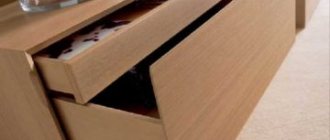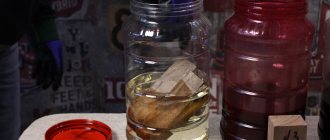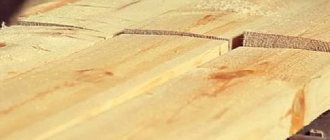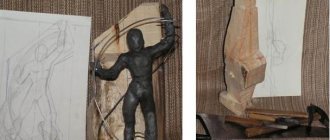Among wood processing technologies, one of the most interesting and exciting aspects is giving the workpiece strength and resistance to negative environmental influences. Traditionally, several treatment options are used at home - applying a protective layer and impregnation with conservation formulations. But as practice shows, such methods do not give much effect; after 2-3 years you have to correct coating defects and re-do the treatment. This state of affairs often prompts the search for new solutions to the problem of protecting wood products, for example, such a method as stabilizing wood at home.
What is wood stabilization
In the process of mechanical processing of wood, various techniques and methods are used - sawing, planing, grinding, carving. During all this work, the natural order of the fibers is disrupted. Some of the fibers are revealed along the entire length, some are broken in the cross section. As a result, after all the manipulations, a product of the desired shape is obtained. But along with obtaining the desired shape, the tree itself becomes even more unprotected from external influences. Treated fibers will still retain the ability to absorb moisture, which can lead to the development of fungal infections and rot.
This state of affairs can only be changed by resorting to the use of stabilization technology or treating the wood with a special composition that can penetrate deep into the pores and literally clog the pores. The wood stabilization process is complex in nature. In the process of stabilization, wood acquires not only qualities that increase its strength and hardness, but also a more interesting appearance.
Main goals of stabilization
Despite the laboriousness of the process and the rather long time that will be spent on stabilization, the result will ensure ease of processing of the workpiece. Thus, during processing, special compositions make it possible to achieve the following material properties:
- Increase the density and hardness of wood;
- Ensure resistance to moisture, pressure and temperature changes, protect from ultraviolet radiation;
- The tree becomes resistant to high temperatures and open flames;
- Materials impregnated with polymers adhere better to paint and varnish coatings;
- The wood becomes impenetrable to biological pests;
- Fibers impregnated with polymer are no longer subject to deformation, wood becomes easier to process and glue;
- When processing manually and instrumentally, you can get a better result - the material changes its properties, it becomes easier to process.
Stabilization methods
Today, for work at home, the same methods are used for processing wood in industrial installations. The process itself can be roughly divided into two stages. The first stage is called impregnation and consists of saturating the fibers with a special composition. During impregnation, the air in the cellulose tubes is displaced and replaced with a polymer composition. The second stage consists of polymerization of the composition, as a result of which the qualities of the wood fibers change.
To apply one or another stabilization method, the optimal composition of substances and work technology are selected. At home, the following wood processing methods are most often used:
- Cold impregnation is the easiest and most reliable way for beginning craftsmen to get a good result. The essence of the method is to soak the wood in a preservative solution or substance. For impregnation, natural oils are most often used - hemp, nut or linseed. The process lasts from 72 hours to 3-4 weeks. Oils are used both in pure form and with the addition of dye to give the material the required color. The convenience of the method lies in its simplicity; all operations are performed without special equipment.
- The hot impregnation method is used for deep penetration of the preservative substance into the layer of material. The complexity of the operation lies in the need to maintain a high temperature of the solution in the impregnation bath for several days.
- Using a vacuum to process wood allows you to obtain a material more saturated with polymers and almost completely remove air from the fibers. This method, unlike the previous ones, requires special equipment - a vacuum chamber and a compressor, which makes it more expensive.
- Pressure treatment is similar to the previous method, with the only difference being that air is removed from the fibers not by vacuum, but by excess pressure. During the processing process, the workpiece is filled with a liquid polymer solution and placed in a chamber to create excess pressure. The period of such processing can last from 12 hours to several days.
Polymerization of substances occurs in different ways - for some, drying at normal temperatures is sufficient, for others this process must occur at elevated temperatures or under the influence of other factors, for example, ultraviolet radiation.
Design of vacuum chambers
Another key aspect of creating a vacuum chamber is design. Most manufacturers of truly high-quality raw materials face this problem.
In reality, it can be difficult to find useful information on this subject. There are manufacturers who are ready to share materials for the production of drying chambers. In addition, many companies offer design services for such equipment, as well as improvements and restoration of outdated installations.
Design of vacuum chambers
According to the projects, the design of such equipment is represented by the following elements:
- Doors;
- Heating components;
- Thermal and vacuum units;
- Automation;
- Installation of a solid fuel tank that runs on wood, coal and the like.
If you have an outdated or ineffective installation, it can be restored by specialized services. Such services, as mentioned earlier, are offered by many companies.
Stabilizing compounds for wood
To achieve the desired result at home, several types of substances are used to stabilize wood. Conventionally, classification can be carried out according to several criteria, for example, by the origin of substances or by the method of their use. If we take as a basis the classification according to the type of origin of substances for stabilization, then the classification will have the following form:
- Materials of natural origin - saline solution, birch sap, linseed, nut or hemp oil, drying oil based on vegetable raw materials;
- Materials based on petroleum products – petroleum drying oil and oil impregnations based on it;
- Synthetic materials - epoxy resin and other polymer compounds.
According to their composition, impregnations can be single-component or multi-component. For example, the drug "Buravid" is a one-component polymer solution that does not require additional preparation before use. And epoxy resin is a two-component composition - the resin itself and a hardener, without which the polymerization process does not occur.
Polymer compositions
Modern polyester oils are most often used for the manufacture of polymer impregnations of wood. These compositions based on one-component oils provide stabilization of wood with deep penetration and reliable fixation. Most formulations use vacuum impregnation and pressure treatment technologies, followed by thermal polymerization at a temperature of 100-150 degrees.
During the impregnation process, liquid polymer compositions are used, and during heat treatment, the polymer changes its physical state throughout the entire depth of the wood structure. Among the most popular compositions today for stabilizing wood at home, we can recommend Anacrol-90, 100term, Buravid, and Pentacryl.
Vacuum chamber container
One of the main elements of making a drying chamber is the choice of container. To choose the right container, it is important to consider several important criteria.
- Material used. Each element must be made of metal that does not corrode. More often the compartment is equipped with aluminum and stainless steel alloys;
- Sealing. It should be remembered that the material used must be protected from moisture and atmospheric air by means of a seal;
- Ventilation system. The engines of the installations must smoothly blow the raw materials, which will ensure a stable air flow intensity;
- When each of the points described above is taken into account, then it will be possible to choose truly high-quality and reliable lumber equipment.
Vacuum chamber container
Step-by-step instructions for stabilizing wood
A step-by-step instruction on the method of vacuum impregnation followed by thermal polymerization will help you visualize the process of stabilizing wood at home. This is one of the most complex processes that requires special equipment - a vacuum chamber. But, despite the apparent complexity, all work can be carried out in a home workshop, and at the same time obtain a fairly high result in processing workpieces.
To work here, the available polymer material “Buravid” is used, and the vacuum chamber uses a regular compressor from a household refrigerator, so you can assemble such a unit yourself.
Two birch bars were selected for the work; the material had previously undergone slight processing - the edges were aligned and a chamfer was made. Drying was carried out at normal room temperature.
For work, we use Buravid impregnation, a ready-to-use polymer product.
The samples are placed in a container and filled with impregnation.
In order for the impregnation to proceed evenly, the bars are pressed with a weight; in this case, a nut from a cylinder is used.
To obtain a pleasant shade, you can use a special pigment dye, but in this case the processing will be carried out without dye, in order to clearly understand how the color of the wood will change only under the influence of the polymer.
Even before placing the container in the vacuum chamber, the process of replacing air with polymer begins - the figure shows how air bubbles begin to escape from the birch suvel.
The container is placed in a vacuum chamber. After closing the lid, the compressor turns on and a rarefied space is created in the chamber.
Through the viewing glass of the camera you can see air leaving the wood in bubbles.
After 72 hours, the bars are removed from the chamber. This is the appearance of birch suvel.
And this is what a board made of ordinary birch looks like.
The next stage is baking the polymer at a temperature of 100 degrees.
To prevent the reaction of impregnation and hot air, it is necessary to make a protective coating. To do this, take cling film, on top of which the bars are wrapped in aluminum foil.
The packaging is placed in a metal tray and placed in a gas oven preheated to 100 degrees for 1 hour.
This is the appearance of a birch block.
And this is birch suvel. Visible cracks appeared on the surface in places where the fibers had low density. Cracks can later be repaired with epoxy. But where the fibers initially had a high density, the polymerized composition of Burovid gave the material high density and strength.
Before the work began, the birch block weighed 101 grams, and after polymerization its weight became 194.5 grams. Before stabilization, birch suvel weighed 225 grams, and after polymerization of the resin it began to weigh 335.1 grams.
Application of stabilized wood
The process of stabilizing wood can significantly simplify the creation of many items with wooden inserts and elements. In practice, the use of stabilization makes it possible to use soft types of wood for the manufacture of tool handles. This material makes comfortable handles for files; the handles of cutters and chisels are not afraid of impacts, and they last much longer than handles made of soft wood. Stabilized wood is also great for making knives. Wooden overlays are durable and comfortable.
Stabilization techniques are also used by master gunsmiths - stabilized wood makes excellent stocks and butts for guns. Moreover, stabilization is often used by master modelers; it is from this material that models of sailing ships and historical ships are made.
Wood stabilization technology is also indispensable for furniture makers; almost all furniture parts made of natural wood require such impregnation. Thanks to stabilization, products last much longer, because wood impregnated with polymer resin is not subject to warping or changing shape.
Types of wood protective agents against fungi and insects
Based on the nature of their action, wood protective agents are divided into antiseptics (preventing the spread of microorganisms), flame retardants (preventing fire) and combined action protective agents .
They are divided according to solubility:
- water-soluble - VR,
- soluble in light organic solvents – L,
- soluble in oils and heavy petroleum products (oils) – M.
And on washability:
- easily washed out - LV,
- washable – B,
- difficult to wash – TV,
- non-washable - NV.
Water-based antiseptics are often used to impregnate wood, as they are safer.











